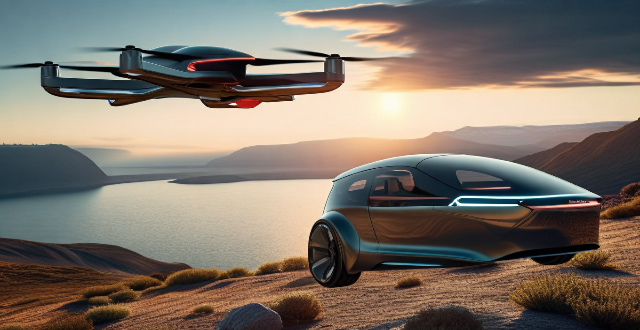Transportation innovation trends include autonomous vehicles, electric vehicles (EVs), hyperloop technology, drone delivery, and smart mobility solutions. Self-driving cars aim to reduce accidents caused by human error and make transportation more efficient. Electric vehicles help reduce carbon emissions and improve energy efficiency. Hyperloop technology could revolutionize long-distance travel by moving people or goods through large tubes at high speeds with reduced air resistance. Drones are being used for delivery services, particularly in rural areas where traditional delivery methods may not be cost-effective. Smart mobility solutions involve the use of digital technologies to create more efficient and sustainable transportation systems.

Transportation Innovation Trends
1. Autonomous Vehicles
Autonomous vehicles have been a hot topic for years, and they continue to be a major trend in transportation innovation. Self-driving cars are becoming more common on public roads, with companies like Google's Waymo, Tesla, and Uber investing heavily in this technology. The goal is to reduce accidents caused by human error and make transportation more efficient.
Key Points:
- Safety: Autonomous vehicles can potentially reduce the number of accidents caused by human error.
- Efficiency: Self-driving cars can optimize routes and reduce traffic congestion.
- Environmental Impact: Electric autonomous vehicles can help reduce carbon emissions.
2. Electric Vehicles (EVs)
The demand for electric vehicles continues to grow as people become more environmentally conscious and governments implement policies to reduce carbon emissions. Major car manufacturers are now offering electric models, and startups like Tesla have disrupted the industry with their innovative designs and technologies.
Key Points:
- Reduced Emissions: EVs produce zero tailpipe emissions, contributing to cleaner air quality.
- Energy Efficiency: Electric motors convert over 60% of electrical energy to driving energy, whereas conventional gasoline vehicles only convert about 20% of fuel energy.
- Government Incentives: Many governments offer tax credits or other incentives to encourage the adoption of EVs.
3. Hyperloop Technology
Hyperloop is a proposed mode of transportation that would move people or goods through large tubes at high speeds with reduced air resistance. This could potentially revolutionize long-distance travel, making it faster than flying in some cases. Companies like Hyperloop One and Virgin Hyperloop are working on making this technology a reality.
Key Points:
- Speed: Hyperloop systems aim to achieve speeds of up to 700 mph.
- Efficiency: By reducing air resistance, hyperloops could be more energy-efficient than other forms of transportation.
- Potential Applications: Besides passenger transport, hyperloops could also be used for cargo transport, reducing road congestion.
4. Drone Delivery
Drones are increasingly being used for delivery services, particularly in rural areas where traditional delivery methods may not be cost-effective. Companies like Amazon Prime Air and UPS Flight Forward are exploring this technology to deliver packages quickly and efficiently.
Key Points:
- Speed: Drones can deliver packages much faster than traditional methods, especially in urban areas with heavy traffic.
- Accessibility: Drones can reach remote areas where traditional delivery services might struggle.
- Cost-Effectiveness: For small packages, drone delivery can be more cost-effective than other methods due to lower labor costs.
5. Smart Mobility Solutions
Smart mobility refers to the use of digital technologies to create more efficient and sustainable transportation systems. This includes real-time traffic management, intelligent transportation systems (ITS), and connected vehicle technologies. Cities around the world are adopting smart mobility solutions to improve urban transportation and reduce congestion.
Key Points:
- Real-Time Data: Smart mobility solutions provide real-time data on traffic conditions, allowing for better route planning and traffic management.
- Connected Vehicles: Vehicles equipped with sensors and communication technologies can share information with each other and infrastructure, improving safety and efficiency.
- Sustainability: By optimizing transportation systems, smart mobility solutions can help reduce carbon emissions and promote sustainable development.